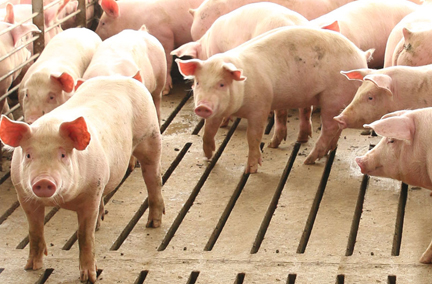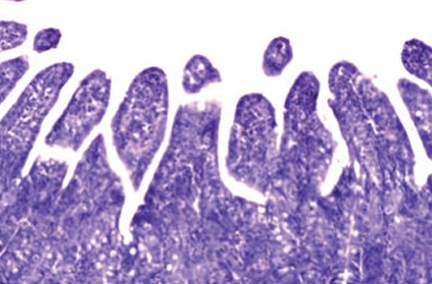

The American Association of Swine Veterinarians, National Pork Board, National Pork Producers Council, and Swine Health Information Center are asking for proposals to identify gaps in US pork industry national biosecurity that could result in the entry and domestic dissemination of diseases foreign to the US pork industry. This work will objectively prioritize those gaps based on their potential to result in the introduction and spread of swine diseases. The final report will be shared with state and federal animal health officials, pork producers, veterinarians and allied industries for actions needed to address the prioritized gaps.
Categories for consideration of study include, but aren’t limited to, foreign imports, entry of foreign travelers, transportation of animals, common inputs to production and domestic market channels. Examples of national biosecurity issues within these categories could include the safety of imported feed components and other common production inputs, the movement of trucks and animals between production phases and to markets, the approved movements between markets of market sows, the activity of and potential commercial pig interaction with feral pigs, legal feeding of plate waste containing meat and other factors that will need to be identified to fulfill the project. It will be the responsibility of the successful proposal to define the specific issues to include.
Resources for proposals and instructions for submission to the National Pork Board can be found at pork.org/rfp/. The deadline for submitting the written proposals for initial review is 5:00 PM CST, April 14, 2020. Submitters whose proposals are selected for final review will be required to present the proposal and answer questions via a webinar with pork industry reviewers. For questions, contact either Dr. Dave Pyburn, [email protected] or Dr. Paul Sundberg, [email protected].

The Swine Health Information Center (SHIC) is soliciting proposals to address priorities for African swine fever (ASF) research in Vietnam. SHIC, with active support from the National Pork Producers Council (NPPC), received a grant from USDA’s Foreign Ag Service division to fund a multi-phase project including swine health field projects in Vietnam, creating the basis for this call for proposals. The Center is interested in supporting US-based researchers with research memorandums of understanding or direct contacts with university or pork production animal health researchers in Vietnam. The objective of these researchable priorities is to help Vietnamese pork production respond and recover from the ASF epidemic and to help US pork producers learn lessons about ASF epidemiology and management, in preparation should the virus enter the US.
There is a pool of approximately $1,000,000 available for the research, averaging $100,000 per project, but individual projects should be expected to be lower or higher. Collaborative projects demonstrating the most urgency and timeliness of completion, as well as efficient use of funds, will be prioritized for funding. Please respond with your priority topic(s) of interest via email to [email protected] by March 4, 2020, if you intend to submit a proposal. Details on proposal format and requirements are posted on the SHIC website. The deadline for proposal submission is 5:00 PM CST, March 30, 2020. Contact Dr. Paul Sundberg at [email protected] or (515) 451-6652 with questions.

Significant attention has been given to mitigating the risk of African swine fever virus (ASFV) transmission in feedstuffs. Effective feed biosecurity includes layers and multiple steps, protecting pigs from many disease challenges beyond ASF including classical swine fever (CSF) and pseudorabies virus (PRV). In a recently published study funded by the Swine Health Information Center (SHIC), researchers’ work to determine the stability of CSF and PRV in feed ingredients under transpacific shipping conditions was detailed and underscores the need for vigilant feed biosecurity processes. Understanding the risk and mitigation of foreign animal diseases such as ASFV, CSFV and PRV in feed and feed ingredients is critical to protecting the health of the US swine herd.
The focus of this study was to 1) identify animal feed ingredients which support survival of CSFV and PRV exposed to transpacific shipment conditions, 2) improve the half-life calculations of ASFV in feed ingredients exposed to transatlantic shipment conditions, and 3) investigate antiviral chemical mitigants as a tool for reducing the risk of introduction and transmission of CSFV, ASFV and PRV in feed and feed ingredients.
In the first step of this mitigation study, animal feed ingredients were contaminated with CSFV or Chinese PRV and subjected to varying temperature and humidity conditions to simulate transpacific shipment over a 37-day period. Feed ingredients were then tested for virus at the conclusion of the model by PCR, VI, ± pig bioassay. Second, ASFV was quantified in animal feed ingredients at several time points throughout a 30-day model simulating transatlantic shipment. Improved ASFV half-life estimates in feed ingredients were calculated to include both standard error and 95% confidence intervals. Third, antiviral chemical mitigants were tested for efficacy against foreign animal diseases in 1) in vitro cell culture models and 2) transboundary shipping models. Overall, this research has improved the ability to quantify risk of CSFV and PRV in feed, implement science-based storage times for ASFV in feed, and identify effective feed additives for risk mitigation of foreign animal diseases through feed.
Results confirmed that ASFV Georgia 07 is capable of surviving transoceanic shipment conditions in conventional soybean meal, organic soybean meal, soy oil cake, choline, pet foods, pork sausage casings, and complete feed. These transoceanic conditions have RH values that fluctuate between 20 and 100%, and temperatures between 32 and 78 degrees F. The half-lives of ASFV in all feed ingredients range between 9.6 and 14.2 days with 12.2 days being the average. Implementing storage times for feed ingredients will help reduce the transmission risk. Researchers also determined that both CSFV and PRV survive in feed ingredients subjected to a 37-day transoceanic shipment. PRV is more stable (similar to ASFV) whereas CSFV is less stable. Researchers are currently evaluating antiviral chemical mitigants that could be used as feed additives to reduce the risk of ASFV transmission in feed.
On February 5, 2020, the Swine Health Information Center (SHIC) joined with other pork industry organizations to release the most current feed holding time recommendations for disease mitigation.
Other methods for avoiding contamination via feed include sourcing components from areas of the world, including the US, that don’t have ASF, CSF, or PRV. Feed additives can be incorporated directly to feed when milling, however, those additives need to be labeled specifically for viral mitigation. To assist when procuring feed components, questions to ask feed suppliers are available on the SHIC website. Feed mitigation is a long-term issue and it deserves long-term planning.

The Swine Health Information Center (SHIC) posted an updated Diagnostic Assay Catalog on February 20, 2020. SHIC’s catalog provides diagnosticians with pertinent information about new and existing PCR and ELISA tests available, including confirmed contact information for the experts who developed the tests, allowing for questions about availability and use. The Diagnostic Assay Catalog includes six Enzyme Linked Immunosorbent Assays (ELISAs) in addition to 18 Polymerase Chain Reaction (PCR) Assays developed in response to SHIC’s prioritized Swine Viral Disease Matrix. These additional tools may provide means to uncover emerging diseases.
The most recent update addresses the reality researchers sometimes change their employment or location; therefore it is necessary to periodically update their contact information for access to the tests. The catalog also summarizes the research behind the test development and covers technical background information including sample types as well as analytical and diagnostic sensitivity and specificity.
Recognizing limitations on producer resources may be a barrier, SHIC also offers Diagnostic Fee Support in cases of high morbidity/high mortality, where an etiology is either not identified or there is a strong supposition the identified pathogen is not the likely cause of the outbreak. Support for the fees of further diagnostic work may help identify newly introduced or emerging swine diseases, addressing the risk of missing a significant issue if a definitive diagnosis is not pursued diligently.

On February 28, 2020, the Swine Health Information Center (SHIC) received a report from a person who traveled to Ecuador and visited several pig farms then returned to the US. This person re-entered in Atlanta, declared the farm visits, and was not diverted for secondary screening. This person did not see signage directing this process nor any beagle brigade teams working. International travelers returning to the US, or those arriving from other countries, after visiting a farm or being in contact with animals in a country (or countries) with ASF, or any other foreign animal disease, should declare this information to US Customs and Border Protection (CBP) via written form, airport kiosk, or verbally. SHIC, the American Association of Swine Veterinarians (AASV), National Pork Board (NPB), and National Pork Producers Council (NPPC) continue to ask international travelers to report if they were not diverted for secondary screening upon arrival in the United States.
If you are NOT diverted for secondary screening after declaring you have been on a farm or in contact with animals in an ASF or other foreign animal disease positive nation, please email the following to [email protected]:
Dr. Sundberg aggregates this information so SHIC, AASV, NPB, and NPPC can share it with CBP to help identify areas for continued focus.

A new coronavirus, officially designated as SARS-CoV-2 but commonly referred to as COVID-19 in conjunction with the disease, has been implicated in an outbreak of respiratory disease among individuals who had visited the Huanan seafood and live animal market in the City of Wuhan, Hubei province, China in December 2019. The virus has since spread throughout China and across the globe. COVID-19 is currently only known as a human pathogen. The American Association of Swine Veterinarians posted information on the disease as it concerns people and animals ahead of their Annual Meeting, providing good information and resources.


In this month’s Domestic Swine Disease Monitoring Report, the overall percentage of porcine reproductive and respiratory syndrome (PRRS)-positive cases in February were down from January in all age groups and sample types. It was noted genetic variability of PRRSV is still increasing. Porcine epidemic diarrhea virus (PEDV) RNA-positive cases in February were up from January in Iowa, Illinois, and Minnesota. The overall percentage of porcine deltacorona virus (PDCoV)-positive cases was down from January. Both PEDV and PDCoV positive cases are within forecasted levels for this time of year. Mycoplasma hyopneumoniae (MHP)-positive cases in February were down from January in all age categories. MHP detection also followed the expected predicted decrease for this period of the year.
Copyright 2025 | Swinehealth.org | Website by Heartland Marketing Group